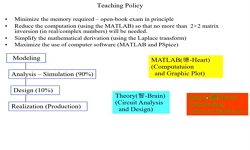One of the suitable structural damage detection methods using vibrational characteristics are damage-index-based methods. In this study, a damage index for identifying damages in plate structures using frequency response function (FRF) data has been p...
http://chineseinput.net/에서 pinyin(병음)방식으로 중국어를 변환할 수 있습니다.
변환된 중국어를 복사하여 사용하시면 됩니다.
- 中文 을 입력하시려면 zhongwen을 입력하시고 space를누르시면됩니다.
- 北京 을 입력하시려면 beijing을 입력하시고 space를 누르시면 됩니다.
https://www.riss.kr/link?id=A103702013
- 저자
- 발행기관
- 학술지명
- 권호사항
-
발행연도
2017
-
작성언어
English
- 주제어
-
등재정보
SCIE,SCOPUS
-
자료형태
학술저널
-
수록면
427-440(14쪽)
- 제공처
-
0
상세조회 -
0
다운로드
부가정보
다국어 초록 (Multilingual Abstract)
One of the suitable structural damage detection methods using vibrational characteristics are damage-index-based methods. In this study, a damage index for identifying damages in plate structures using frequency response function (FRF) data has been provided. One of the significant challenges of identifying the damages in plate structures is high number of degrees of freedom resulting in decreased damage identifying accuracy. On the other hand, FRF data are of high volume and this dramatically decreases the computing speed and increases the memory necessary to store the data, which makes the use of this method difficult. In this study, FRF data are compressed using two-dimensional principal component analysis (2D-PCA), and then converted into damage index vectors. The damage indices, each of which represents a specific condition of intact or damaged structures are stored in a database. After computing damage index of structure with unknown damage and using algorithm of lookup tables, the structural damage including the severity and location of the damage will be identified. In this study, damage detection accuracy using the proposed damage index in square-shaped structural plates with dimensions of 3, 7 and 10 meters and with boundary conditions of four simply supported edges (4S), three clamped edges (3C), and four clamped edges (4C) under various single and multiple-element damage scenarios have been studied. Furthermore, in order to model uncertainties of measurement, insensitivity of this method to noises in the data measured by applying values of 5, 10, 15 and 20 percent of normal Gaussian noise to FRF values is discussed.
동일학술지(권/호) 다른 논문
-
Wavelet based system identification for a nonlinear experimental model
- Techno-Press
- Li, Luyu
- 2017
- SCIE,SCOPUS
-
- Techno-Press
- Abouelregal, A.E.
- 2017
- SCIE,SCOPUS
-
Mechanical parameters detection in stepped shafts using the FEM based IET
- Techno-Press
- Song, Wenlei
- 2017
- SCIE,SCOPUS
-
Vision-based hybrid 6-DOF displacement estimation for precast concrete member assembly
- Techno-Press
- Choi, Suyoung
- 2017
- SCIE,SCOPUS







 ScienceON
ScienceON






